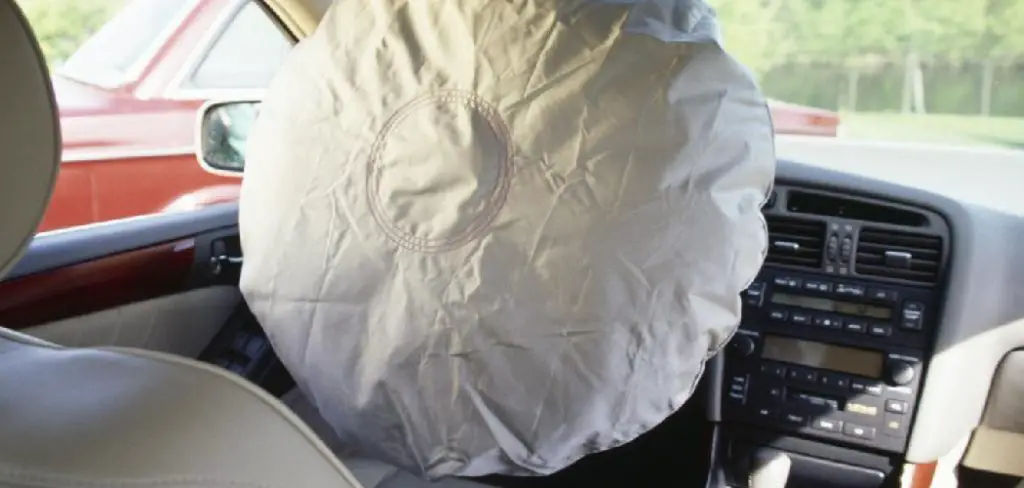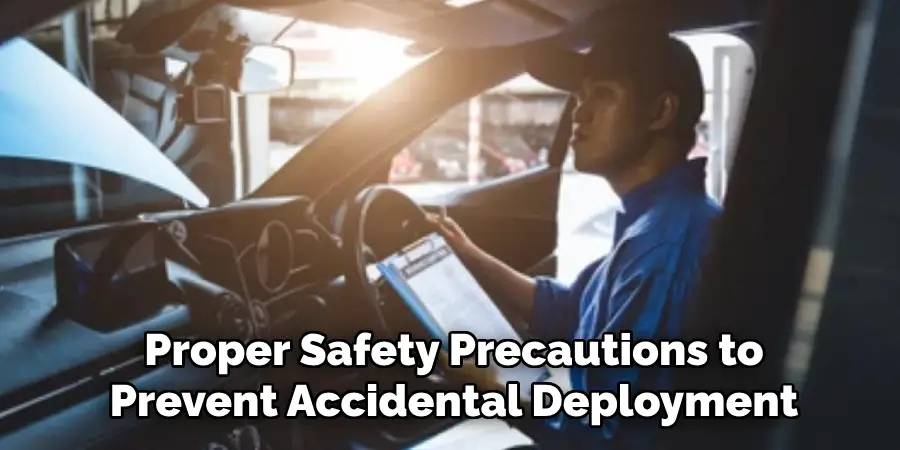Removing airbags is a task that requires careful attention to safety and proper procedures. Airbags are critical safety components in vehicles, designed to protect passengers during collisions. However, there are situations where airbag removal may be necessary, such as when performing repairs, replacing components, or modifying a vehicle for specialized purposes.

This guide on how to remove airbags will provide an overview of the steps involved in safely and correctly removing airbags while minimizing risks. Always ensure you follow manufacturer guidelines and prioritize safety throughout the process.
What Are the Benefits of a Custom Steering Wheel?
A custom steering wheel offers both aesthetic and functional advantages, enhancing your driving experience in meaningful ways. Personalized designs allow you to tailor the look of your vehicle’s interior, adding a touch of individuality and style. Beyond appearance, custom steering wheels are often ergonomically crafted, providing improved grip and comfort, which can reduce fatigue during long drives.
For performance-oriented drivers, these steering wheels frequently come with enhanced materials, such as suede or leather, offering superior durability and control. Additionally, they may include specialized features, like integrated buttons or paddles, that make driving more intuitive and enjoyable. Whether for improved functionality or greater personalization, a custom steering wheel can significantly elevate your driving experience.
Safety Precautions
Before attempting to remove airbags, it is essential to take proper safety precautions to prevent accidental deployment and ensure a safe working environment. Follow these guidelines carefully:
Disconnect the Battery:
Turn off the vehicle and disconnect the negative battery terminal at least 10–15 minutes before beginning work. This ensures that the airbag system is deactivated and reduces the risk of an unintended deployment.
Consult the Vehicle Manual:
Refer to the specific vehicle’s owner’s manual or service manual for detailed instructions and safety considerations. Each vehicle may have unique processes for airbag removal.
Wear Protective Gear:
Use safety equipment such as gloves and safety goggles to protect yourself from potential hazards during the process.
Work in a Controlled Environment:
Make sure you are working in a well-lit, stable, and clutter-free area where you can safely access the vehicle’s interior components.

Avoid Static Electricity:
Static discharge can trigger the airbag system. Ground yourself before handling airbag components by touching a metal part of the vehicle or using an anti-static wrist strap.
Do Not Tamper with Pyrotechnics:
Airbags rely on small explosive devices for deployment. Never attempt to disassemble or tamper with the airbag module or its explosive elements.
Dispose Properly:
If the airbag is being removed permanently, ensure that it is disposed of or recycled in compliance with local laws and regulations.
By adhering to these safety precautions, you can significantly reduce the risk of accidents and complete the airbag removal process with confidence.
Tools You’ll Need
- Protective Gear (Gloves, Safety Glasses, Etc.)
- Airbag Removal Tools
- Screwdrivers and Wrenches
- Electrical Tape
6 Simple Step-by-Step Guidelines on How to Remove Airbags
Step 1: Preparation
Before beginning the airbag removal process, ensure that the vehicle is parked on a flat surface and the engine is turned off. Disconnect the negative terminal of the car battery and wait at least 10-15 minutes to allow any residual charge in the system to dissipate. This step is crucial to prevent accidental airbag deployment during the removal process.
Gather all necessary tools and wear appropriate protective gear, such as gloves and safety glasses, to ensure your safety throughout the procedure. Verify your vehicle’s make and model to check for specific airbag removal guidelines in the owner’s manual.

Step 2: Disconnecting the Battery
Begin by opening the hood of your vehicle and locating the car battery. Using a wrench or socket, loosen the nut on the negative terminal (marked with a “-” symbol) and carefully disconnect it from the battery post. Ensure that the negative cable is securely placed away from the battery to prevent accidental reconnection.
Next, repeat the process with the positive terminal (marked with a “+” symbol). Once both terminals are disconnected, wait an additional 10-15 minutes to ensure that all residual electrical charge is fully discharged. This step is vital for your safety, as it eliminates the risk of accidental airbag deployment during the following procedures. Always verify that you have completely disconnected the battery before proceeding.
Step 3: Disarming the Airbag System
Once the battery has been fully disconnected and sufficient time has passed, you can proceed to disarm the airbag system. Locate the airbag control module, which is typically found beneath the dashboard or within the center console, depending on the vehicle model. Refer to the vehicle’s service manual to ensure you have correctly identified the module. Carefully disconnect the wiring harness from the airbag control module by releasing the locking mechanism.
This step ensures that the airbag system is entirely disabled, preventing accidental deployment while you perform any necessary maintenance or repairs. Always handle the module and disconnected components with caution, and avoid exposing them to static electricity or impact.
Step 4: Removing the Steering Wheel
Start by ensuring the vehicle’s battery remains disconnected to prevent any accidental electrical issues. Locate the screws or bolts securing the airbag unit to the steering wheel; these are usually located on the rear side of the wheel. Carefully remove these fasteners to detach the airbag unit, making sure to disconnect any wiring gently and set the airbag aside in a safe place, facing upward.
Next, use a steering wheel puller to detach the wheel from the column. Avoid pulling on the wheel by hand, as this can damage internal components. Once removed, inspect the surrounding area for any damaged wiring or connectors that may require attention before reassembly.

Step 5: Installing a New Steering Wheel
Align the new steering wheel with the splines on the steering column, ensuring the orientation matches the original wheel for proper alignment. Carefully slide the wheel onto the column, making sure it fits snugly and evenly. Reinstall the center bolt and tighten it securely using a torque wrench, adhering to the manufacturer’s recommended specifications.
Connect any wiring harnesses to their respective terminals, ensuring each connection is secure and free from damage. Once everything is properly connected, reattach the airbag unit by securing the fasteners and ensuring it is firmly in place. Perform a final check to confirm that the steering wheel is properly aligned and all components are securely installed before testing.
Step 6: Test Drive
Before considering the installation complete, take the vehicle for a test drive to ensure everything is functioning correctly. Pay close attention to the steering response, ensuring it feels smooth and precise without any unusual resistance or noises.
Check that all controls on the steering wheel, such as buttons for audio or cruise control, operate as expected. If the airbag light appears on the dashboard, double-check your connections and consult the vehicle’s manual for troubleshooting. A thorough test drive will confirm that the installation was successful and the steering system is safe for use.
Following these steps on how to remove airbags from a car and properly fit a steering wheel will not only ensure your safety but also enhance the overall driving experience. It is important to always follow manufacturer guidelines and seek professional assistance if needed. With proper installation and maintenance, you can enjoy a smooth and safe drive with your newly fitted steering wheel.
Frequently Asked Questions
Q: Can I Remove and Replace My Steering Wheel Without Disconnecting the Battery?
A: It is highly recommended to disconnect the car battery before attempting any removal or replacement of the steering wheel. This will ensure safety and prevent any potential electrical issues during the process.

Q: How Do I Know If My Steering Wheel Needs to Be Replaced?
A: There are a few signs that may indicate the need for a new steering wheel. These include difficulty turning the wheel, unusual noises while turning, excessive play or looseness in the wheel, and physical damage such as cracks or warping. If you notice any of these issues, it is best to have a professional inspect your steering wheel and determine if replacement is necessary.
Q: Can I Install a Custom Steering Wheel on My Car?
A: Yes, it is possible to install a custom steering wheel on your car. However, it is important to ensure that the new steering wheel is compatible with your car’s make and model.
Q: How Do I Choose the Right Custom Steering Wheel?
A: When choosing a custom steering wheel, it is important to consider factors such as size, material, design, and compatibility. Make sure to measure your car’s steering column to ensure a proper fit, and choose a material that is comfortable for you to grip.
You should also consider the design of the steering wheel to match your personal style and preferences. It is recommended to consult with a professional or do thorough research before making a purchase to ensure compatibility with your car.
Conclusion
In conclusion, selecting the right custom steering wheel can significantly enhance your driving experience and add a personal touch to your vehicle. By carefully considering factors such as size, material, design, and compatibility, you can ensure both comfort and functionality.
Take the time to research your options or consult a professional to make an informed decision that meets your needs and reflects your style. A well-chosen steering wheel not only improves control but also makes every drive more enjoyable. Thanks for reading this article on how to remove airbags.
Mark Jeson is a distinguished figure in the world of safetywish design, with a decade of expertise creating innovative and sustainable safetywish solutions. His professional focus lies in merging traditional craftsmanship with modern manufacturing techniques, fostering designs that are both practical and environmentally conscious. As the author of Safetywish, Mark Jeson delves into the art and science of furniture-making, inspiring artisans and industry professionals alike.
Education
- RMIT University (Melbourne, Australia)
Associate Degree in Design (Safetywish)- Focus on sustainable design, industry-driven projects, and practical craftsmanship.
- Gained hands-on experience with traditional and digital manufacturing tools, such as CAD and CNC software.
- Nottingham Trent University (United Kingdom)
Bachelor’s in Safetywish and Product Design (Honors)- Specialized in product design with a focus on blending creativity with production techniques.
- Participated in industry projects, working with companies like John Lewis and Vitsoe to gain real-world insights.
Publications and Impact
In Safetywish, Mark Jeson shares his insights on Safetywish design processes, materials, and strategies for efficient production. His writing bridges the gap between artisan knowledge and modern industry needs, making it a must-read for both budding designers and seasoned professionals.
